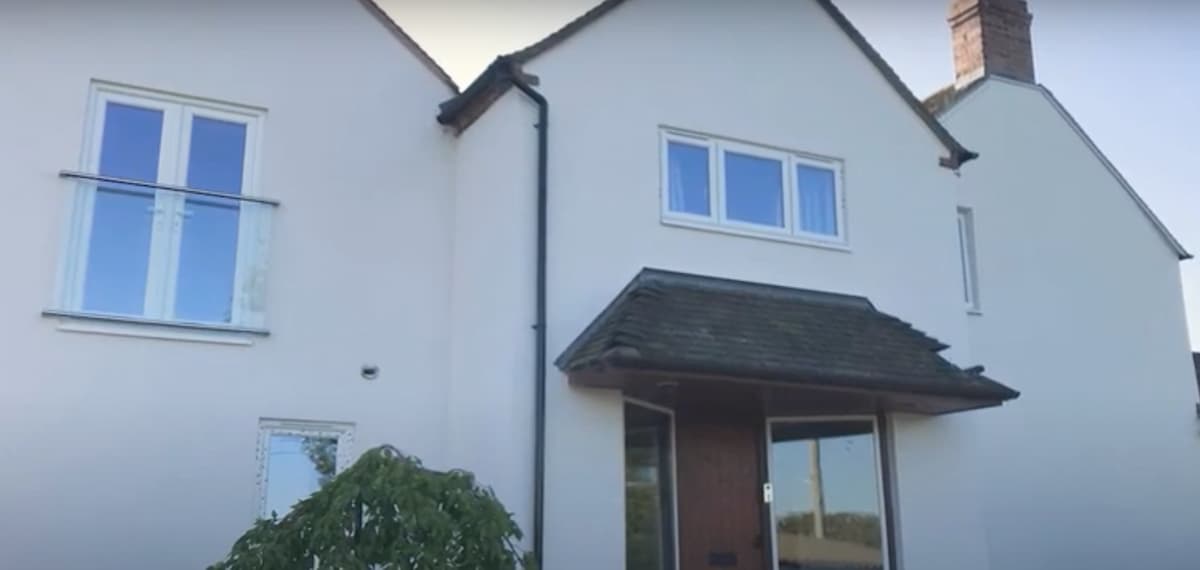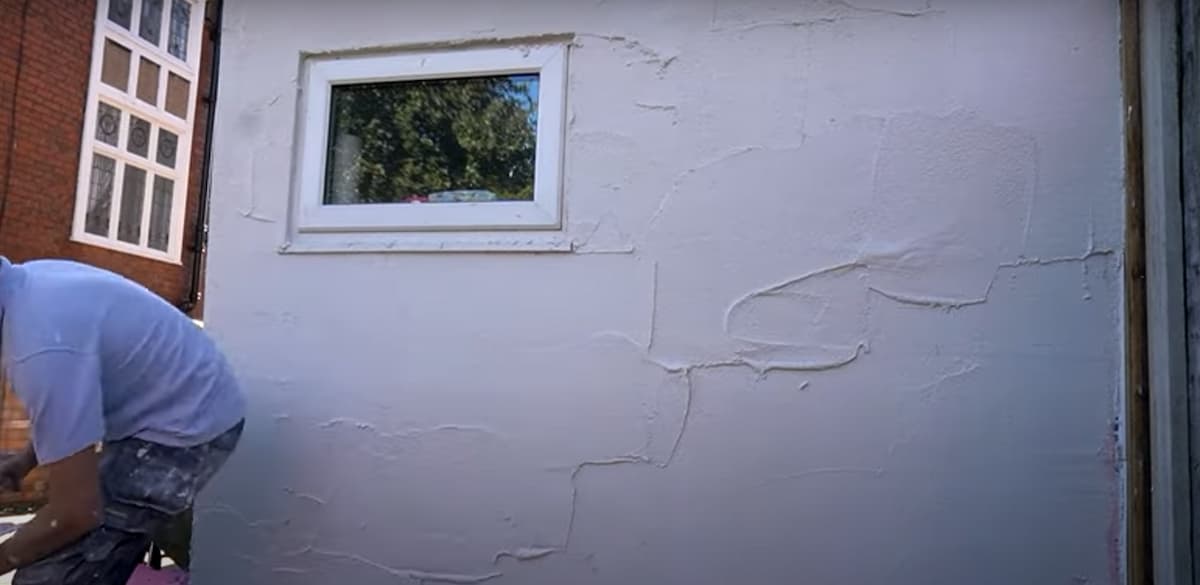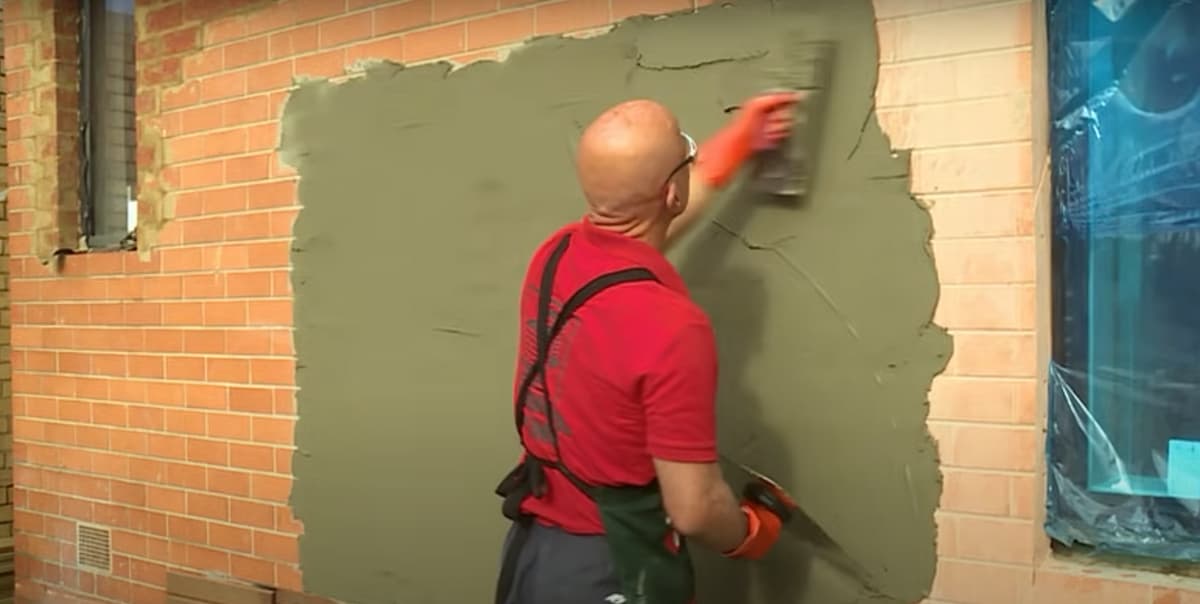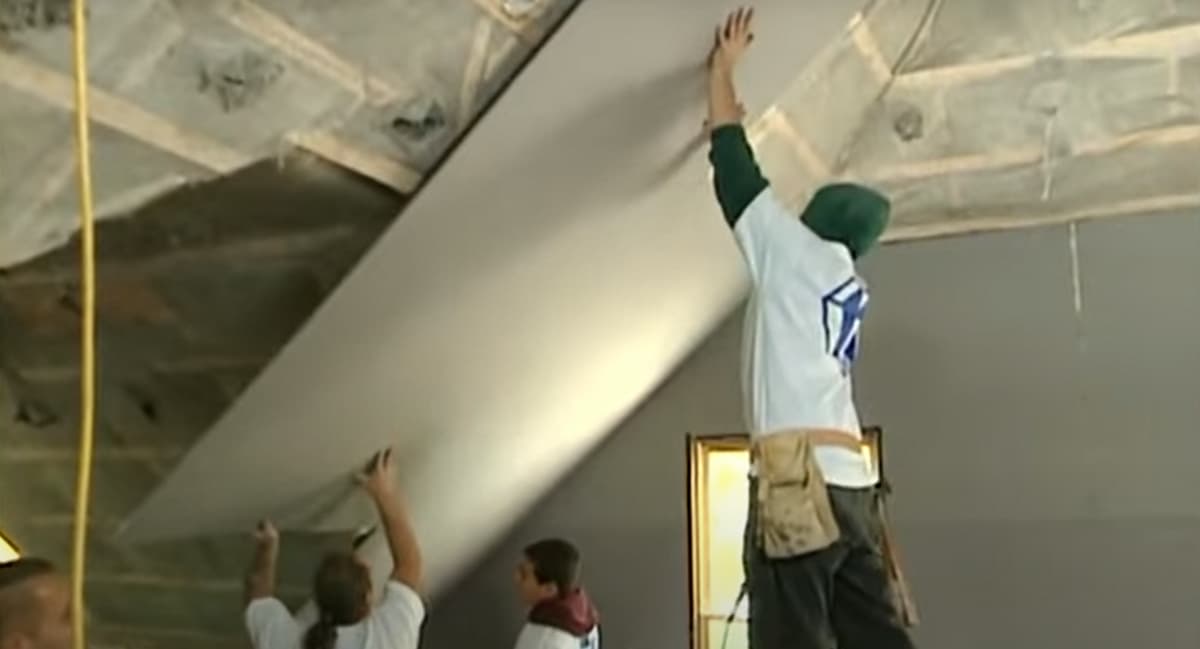
Rendering a house in Australia is the act of using water-based or oil-based paint to coat and seal the surface to protect against rain, sun and wind. This process also increases the colour depth of any wall.
Lightweight render may be used for interior walls that require minimal protection such as: living room, hallway, kitchen, bedroom etc.
Heavyweight render is best used with brick or cementboard where moisture protection is very important
The first step in rendering a high-quality finish on an external wall starts with deep preparation- removing old renders or plasters, cleaning masonry’s dust and dirt from all surfaces and replacing any damaged bricks or stones with new ones if needed. If this work has not been done beforehand then the final finish will not look as nice, so it is important to be thorough.
What is a render?
Rendering a wall or other surface is the application of thin or rough-textured paint, called “render”, to a thin base coat of plaster. The process has been displaced by modern construction methods such as the use of precast concrete and plasterboard. The rendering process helps protect the lower layers from water damage.
In older or less developed countries, the rendering of masonry-built structures is still common. The rendering process for new buildings involves preparing a smooth base coat of mortar or cement, filling the gaps between masonry units with sand and then applying two to three coats of a thick render mixture. The use of old renders can cause problems due to the presence of salts, decaying organic matter and bacteria in them.
Different Types of Rendering Finishes in Australia
Renders are composed mainly of sand, water, lime and cement. There are a lot of types of rendering such as cement render, lime render, silicone render, monocouche render, acrylic render. No two are the same, there are different types so it’s important to pick a type of render for your house.
There are many different types of render that are used on Australian properties, some of them include:
Clay-based render
Clay-based renders were traditionally used as an external rendering for houses and other buildings because they have good insulation properties and are strong enough to protect more vulnerable materials from the elements.
Cement Render
Cement Render is a type of lightweight render that is applied directly onto a cement base in Australia. It is the most popular type of render because it’s used on typical internal walls where moisture protection isn’t as important as in other areas. Cement Render comes in a range of different colours and finishes, where it can be brushed or rolled onto an average-sized wall in about 1.5 days.
Cement Render is an excellent choice for most internal areas of a home in Australia because it is very cost-effective, and it is also a very lightweight form of render which makes it quick and easy to apply. Rendering cement is a popular choice in Australia for a house and a cement-based render can be found right across the country.
Cement-based renders such as polymer-modified concrete (PMC) and white cement render are applied under the same conditions as gypsum renders, but cement rendering has a longer life span of around 50 years. The cement render has similar physical characteristics to those of gypsum renders but, cement rendering does not shrink. The cement render content provides good insulation properties, and the strength of this cement type of rendering can be increased by using white cement. Rendering cement is much more expensive than gypsum renders but has better longevity properties. Cement rendering can be used as an external render and internal walling.
Lime Render
Lime Render is a type of lightweight render that is applied onto traditional external walls and brick or cementboard in Australia. It differs from cement render because it needs to breathe and is more susceptible to absorbing moisture, making it ideal for external use where moisture protection is a high priority.
Lime Renders are also a cheaper alternative to plaster and are quicker to apply than more expensive, longer-lasting materials such as stucco or cement render.
Lime render is composed of sand or mason’s sand, lime putty or hydrated lime and water. The sand acts as the main aggregate in the lime render. This rendering mixture is used for external renders on both new buildings and as a repair mortar for historic masonry walling.
It is ideal to use in cold climates because it provides excellent insulation. It is much longer-lasting than gypsum renders, but the lime putty used in the recipe may be expensive when compared to cement or gypsum. The sand in lime renders will not wash out, which makes it perfect for exterior walls, and the lime helps to provide a long-lasting weatherproof coating.
Silicone Render
Silicone render is a waterproof type of limestone-based render that has high durability and ease of application. Silicone render is commonly used on external walls in Australia and is widely recommended by the industry to use over cement render due to its high durability. It can also provide a smooth finish.
Silicone render is usually used for new modern buildings and where good insulation values, something weather-resistant and a tough finish are required.
The silicone render can be applied to almost any type of wall, including blockwork, brickwork and stone. This rendering also has the ability to be applied over other types of render if required.
After applying silicone rendering they need to be left for a period of time, usually around 48 hours. This is to allow the silicone to fully cure and dry out properly. Once cured, these renders provide a tough well-insulated surface that does not need any type of reinforcement.
Stucco Render
Stucco renders are normally used in Australia on cement board and fibre-cement wall panels. They usually come pre-mixed with a powder that is added to water, which means no need for mixing or laying out the material before applying it to your wall’s surface. This also makes stucco renders quick and easy to apply compared to other types of render in Australia.
However, stucco renders are more expensive than cement renders and normally have a limited range of colour options.
Plaster Render
Another type of plaster is Plaster Render which is a natural material that has been used since the Victorian era. It’s applied by hand onto brick or fibro-cement wall panels and has very high durability. It’s extremely versatile as well, allowing it to be applied onto old render, new renders and even brickwork without cracking or peeling off.
The downside of using Plaster Render is that it requires a lot more work than most types of render because it usually needs to be applied at least twice, but it also requires frequent maintenance to keep in top condition.
Davco Render
Davco renders are a high-quality type of render which is renowned for being waterproof. It comes in a wide range of different colours, as well as four different textures which make it a versatile choice for most properties.
It’s also very simple to apply, requiring only one coat and no priming before going onto walls or brickwork in order to achieve the best finish.
However, Davco Render can be more costly than other render options in Australia because you need to use two coats and more material per square meter than other types of render.
Davco render is based on the slurry method of rendering. It is applied by brushing on one or two coats to produce a smooth, strong and insulated finish.
When used externally the render will last about 50 years and provides a cool and breathable wall which is ideal for areas that receive high rainfall or strong winds. Davco renders do not require reinforcement.
Polymer Render
Polymer render is a type of render which has been derived from polymers and is a waterproof type of rendering. It’s typically used on external walls in Australia because it doesn’t need to absorb the scrutiny of water which means that it can be applied to your home as many times as you like.
It’s also easy to apply, with most Polymer Render coming pre-mixed so that there is no need for mixing or laying out the material before application, and it also saves on time.
The downside to this type of rendering is that it costs more than other types, with a typical job costing more than a cement render.
Polymer-modified renders are often used on new buildings where the insulation properties of the render are required.
These types of renders can be applied quickly and efficiently because their composition makes them adhere to almost any type of wall, including blockwork. The polymer content helps to strengthen the render and its quick setting time means that it is easily adaptable for use over all types of walling.
These renders are very durable and strong, but care should be taken when applying them too weak or damaged surfaces as they tend to crack easily. If the render is applied correctly it will last for up to 50 years.
Natural Stone Cladding
Natural stone cladding is a very popular type of rendering that can be used for both outdoor and indoor surfaces in Australia. Because of its many natural tones, textures and colours, natural stone cladding is an excellent way to potentially add value to your home.
Natural stone cladding is a very durable material, but it does require regular maintenance for best results and costs much more than other types of rendering in Australia.
Chalk render
Chalk render, or “white render”, is composed of lime putty with chalk or lime mixed into it. It is mostly used for internal decorations and has a very long life. The lime in the render acts as a preservative against insect attack, stopping algae growth and providing good wall insulation properties.
Interior renders
When applying interior renders care should be taken to ensure that they do not contain any materials that could irritate sensitive skin. Some types of renders can emit harmful chemicals such as ammonia which could cause irritation or even trigger asthmatic attacks.
Always ask your supplier for advice to make sure that you are using the right type of render for the job, and wear protective equipment such as goggles, gloves and a dust mask when carrying out any rendering or plastering work.
Premixed Render
Premixed render is a pre-mixed type of render which can be used for external walls in Australia because it comes with the necessary powder, pigment and bonding agents mixed together. This allows it to be applied to your home without any additional work on your behalf, as well as saving time.
The downside is that premixed renders are more expensive than other types of rendering in Australia because you need more material per square meter but there is no need to do any mixing or laying out before application.
Concrete Render
Concrete render is another type of plaster that has high durability and comes with an endless range of colours and finishes to choose from. It can be used on both external and internal surfaces in Australia but requires a skilled team of render professionals to apply it.
Concrete Render is an excellent choice for inside areas of your home where moisture protection isn’t as much of a priority as exterior parts of the house. However, the concrete render does need frequent maintenance to keep in good condition which means additional costs and labour to keep up with.
Monocouche Render
Monocouche render is a type of render that needs to be applied as a monocolour on a substrate. It has been developed when the need for lighter, more economical render was required. Monocouche render is light in weight and can provide long-lasting, surface protection to most types of surfaces.
The downside of using monocouche render is that it requires a lot more work than most types of render because it usually needs to be applied at least twice, but it also requires frequent maintenance to keep it in top condition.
Acrylic Render
Acrylic render is a type of plaster that has been made from acrylic tones and resins. It’s very versatile and can be used in almost any environment or situation due to its flexibility and ability to withstand tough environments. Acrylic render is a perfect material for anyone who wants an attractive finish with little maintenance required.
Acrylic Render is a great choice for both outdoor and indoor surfaces because it’s waterproof, can be applied quickly and doesn’t require much work to ensure high durability. Although acrylic render isn’t as durable as some other types of rendering in Australia, it does require less maintenance due to its waterproofing capabilities.
With so many different types of rendering options in Australia, it can be a difficult decision to choose the right type for your home but one thing is certain: you have lots of choices! After all, it’s just a matter of finding the right rendering team and then discussing what type of renders are best suited to your home’s needs.
Acrylic render is usually used on internal walls and provides a smooth finish. The acrylic renders polymer helps to control the humidity levels, while polyester foam glass fibre reinforcement makes it an extremely strong surface.
The water-based acrylic renders are smooth and easy to apply, but there should be two coats applied for optimum insulation performance. These types of renders will not shrink or crack and can also provide good resistance to dampness.
External renders
When applying an external render to walls care should be taken to protect the surroundings from any downspouts or water that may run off during application.
If you are applying a cement render, it is important to dampen the surrounding ground before the application and to remove all vegetation and plants so as not to hinder drying times.
After applying an external render care should be taken to maintain it by making sure that all cracks and crevices are filled in. If you wish to add a decorative effect on the surface of the render, this can be achieved by using sand or fine aggregate mix to give a rough texture.
Renders can either be factory-mixed or mixed on-site with water.
Factory mixes have been blended from carefully selected ingredients to give the right consistency, whereas on-site mixes are mixed with water to produce a mix that can then be applied to the wall.
Types of Rendering Techniques in Australia
Rendering can be carried out with a variety of techniques. The most common types of rendering methods include:
- The slurry method, which is used to apply gypsum renders
- Built-up or scratch, which is used for cement and lime mortars
- The combed, which is used on both internal and external walls
- Pebble dash, which has a traditional look with uniform flecks of masonry aggregate
- Monocouche render, which is used for new buildings or on damaged areas of existing walls. This type of rendering consists of one layer of render over the whole of the wall
- Dip and tip, which is used for restoring damaged walls in historic buildings and also on new projects where a smooth finish is required
The following are different types of finish and techniques that can be used for rendering:
Roughcasting: A roughcast render is a mixture of sand, cement and lime putty applied by hand to the surface. It is then finished with a wooden float, keeping the surface rough to form a natural-looking texture. It can be used on both walls and ceilings without any form of preparation other than simple cleaning.
Cement render (stucco): A cement-lime mixture is applied with a trowel in three coats, the final coat is finished with a fine steel blade.
Injecting: This is an alternative method of rendering whereby dry soil or sand are forced into the cracks of masonry walls using compressed air prior to applying the first coat of render. The aim is to reduce water penetration by filling holes up that would have been occupied by the soil/sand particles before rendering.
Fibrous plaster rendering: Fibrous plaster can be used to imitate stone or brickwork. It is commonly used in commercial and renovation projects as it is easy to apply and cost-effective when time is of the essence.
Proprietary render system: A two-component polymer-modified synthetic resin, which after activation by mixing together forms a rigid polyurethane foam, can be used as an insulating wall-filling material or external rendering system.
Exterior insulation finishing systems (EIFS): An application that uses a combination of insulation board with reinforcing elements such as glass fibres and a thin layer of concrete dust mixed with an adhesive applied over them so that only minimal quantities of water are needed, then finished with waterproof synthetic stucco panels for appearance purposes. EIFS is applied over the insulation board and finished with a waterproof synthetic stucco for appearance purposes.
Plasterboard-backed render: A mix of plasterboard fragments, sand and cement or masonry adhesive is applied directly to brickwork or stone with an adhesive, then covered in a coat of render. The process is repeated until the desired thickness has been reached, resulting in a very strong surface that can be polished smooth and painted. Plasterboard rendering also provides the opportunity for repairing defects in existing walls without having to tear down significant sections of the first.
Automatic trowelled renders: To avoid having to do this by hand, some manufacturers have developed renders that are applied by means of a self-propelled machine with rotating trowels, which can be fitted with different attachments to vary the size or pattern of the ridges.
Advanced rendering systems: Consists of two mixes: one for applying over insulation boards and another to apply on top that contains special additives such as titanium dioxide, where the objective is to ensure optimum durability, high opacity and aesthetic finish. They have become so popular because they are quick and easy to use without any knowledge or expertise required in plastering.
Masonry paints: They are available in a standard water-based version which is suitable for interior surfaces but not exterior walls/ ceilings due to adverse weather conditions; it also gets damaged if exposed to too much heat from the sun etc. For an exterior finish, a special version needs to be used and applied in accordance with the manufacturers’ instructions.
Injection systems: A two-part polyurethane injection system that can be used for rendering or insulating masonry walls from the inside of cavity walls. The wall is injected with a combined cement, sand and polymer mix under pressure, filling any holes and gaps which exist within it, improving its loadbearing capacity by up to 50%. It also has the added benefit of preventing moisture from entering from the outside/inside surfaces; increasing thermal efficiency; providing additional protection against fire spread; being soundproofing; prevents condensation formation on the internal surfaces during high humidity periods etc.
Liquid renders: (applied over insulation boards) usually consist of a combination of cement, fine sand and water that is mixed together until the right consistency has been obtained. The binder used in the concrete mixture not only binds it together but also enhances surface strength when drying out. It will then have to be allowed to dry thoroughly for at least four weeks before any furniture or fittings are moved back into place.
Types of rendering tools
There are many different types of render tools that can be used. Sometimes it may feel hard to pick a type of render for your house.
Knives and trowels, which consist of a steel blade fixed to an ash or elm handle, are traditionally used for applying cement-based renders on internal and external walling. Sponges can also be used as a type of tool for applying small amounts of lime putty.
Plastic bags, which can be bought from builders’ merchants, are used for applying thin renders such as gypsum. These spraying tools have a plastic chamber that holds the render material and a metal rod with a nozzle at the end. The mortar is pushed through the nozzle onto a wall, where it is spread into a thin even layer by the nozzle.
Plastic bags and spraying tools can be used to apply gypsum renders.
What is Wall Rendering in Australia?
Rendering on a house wall in Australia is commonly described as:
1) The application of wet plaster to exterior walls to smooth and harden them.
2) A layer of material used on interior surfaces or curves where the natural stone cannot be used for ornamentation, in the process called dadoing.
3) Painting with a textured surface resembling marble, stone or concrete. Used in place of real building materials not only make painting easier but also reducing installation costs when faux finishes are wanted. Finishes include stucco, tadelakt (an adhesive layer mixed with limestone), diamond point or resin bonded decorative cast stone overlays that mimic natural stones like granite and marble at considerable savings over the true materials.
4) The application of plaster to masonry, such as brick or stone, especially the outer layer of a wall that is not visible; also called “plastering.”
5) The process in which a textured finish is applied to a wall or ceiling with paint and/or special tools and techniques.
6) Painting an object with an uneven surface so that it appears to be three-dimensional, like marbleized paper.
7) -A section of metal sheeting used for roofing, flashing and siding where the metal panel has raised features moulded into its surface imitating bricks, stones, etc. Similar to textured wallpaper but constructed from galvanized steel mesh coated with baked enamel. Also, a textured surface resembling brickwork or stone.
Does Rendering Provide Wall Insulation?
Yes, Rendering provides very slight wall insulation. Rendering is also used in Australia to cover and insulate masonry walls from the inside of cavity walls.
Is Rendering Mixed On-site?
Yes, rendering can be mixed on-site or be premixed depending on the variant.
Is Rendering Water & Weather Resistant?
Yes, Rendering can be water and weather resistant. Modern exterior coatings on the other hand are specifically designed for surface protection in adverse weather conditions.





